Northrop F-5E Tiger II Technical Specifications
Service Year: 1962
Type: Single-Seat Lightweight Multirole Aircraft
National Origin: United States
Manufacturer(s): Northrop Aircraft Corporation - USA
Production Total: 2,246
Structural (Crew Space, Dimensions and Weights)
Operating Crew (Typical): 1
Overall Length: 47.41 feet (14.45 meters)
Overall Width: 26.67 feet (8.13 meters)
Overall Height: 13.32 feet (4.06 meters)
Weight (Empty): 9,722 lb (4,410 kg)
Weight (MTOW): 24,723 lb (11,214 kg) Installed Power and Standard Day Performance
Propulsion: 2 x General Electric J85-GE21 afterburning turbojet engines developing 5,000 lb thrust each.
Maximum Speed: 1,077 mph (1,734 kph; 936 knots)
Maximum Range: 1,543 miles (2,483 km)
Service Ceiling: 51,804 feet (15,790 meters; 9.81 miles)
Rate-of-Climb: 28,700 feet-per-minute (8,748 m/min) Armament / Mission Payload
STANDARD:
2 x 20mm M39A2 internal cannons
2 x AIM-9 Sidewinder air-to-air missiles on wingtips.
OPTIONAL:
Mission-specific ordinance is limited up to a maximum of 7,000lbs across 4 x underwing and 1 x underfuselage hardpoints and can include:
2 x AIM-9 Sidewinder short-range air-to-air missiles.
4 x AIM-120 AMRAAM medium-range air-to-air missiles.
AGM-65 Maverick air-to-surface guided missiles
2 x LAU-61 19-shot 70mm rocket pods
2 x LAU-68 7-shot 70mm rocket pods
2 x LAU-10 4-shot 127mm rocket pods
2 x Matra SNEB 18-shot 68mm rocket pods
Conventional Drop Bombs
Cluster Bombs
Napalm Bombs
3 x 275 US gallon External Fuel Droptanks Global Operators /
Customers
Austria; Bahrain; Botswana; Brazil; Canada; Chile; Ethiopia; Greece; Honduras; Indonesia; Iran; Jordan; Kenya; Malaysia; Mexico; Morocco; Netherlands; Norway; Philippines; Saudi Arabia; Singapore; South Korea; Spain; Sudan; South Vietnam; Soviet Union; Switzerland; Taiwan; Thailand; Tunisia; Turkey; United States; Venezuela; Vietnam; Yemen
S'sonic
Stealth
Menu
A free template by Lucknowwebs.com for WYSIWYG WebBuilder 8
Powered by Sispro1-S
Nigel G Wilcox
Paragon Of Space Publication
© Copyright Reserved - United Kingdom
Ideal Screen Composition 1024 x 768
SITEMAP
PSEUDO SCIENCE
SCIENCE RESEARCH
ABOUT
Desk
Supersonic
Stealth
Study
Menu
MAIN INDEX
Fastest Air Planes
Space
Transport
Menu
F-5 Freedom Fighter
http://military.wikia.com/wiki/SEPECAT_Jaguar?file=Cockpit_of_Jaguar_GR.3A.jpg
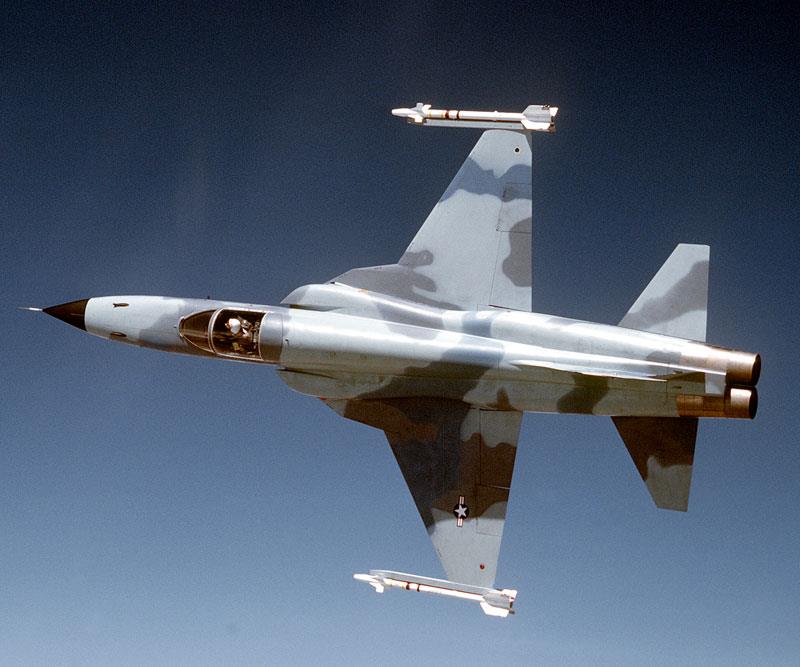
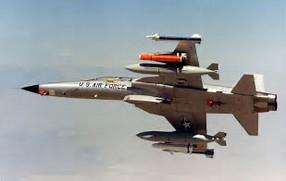

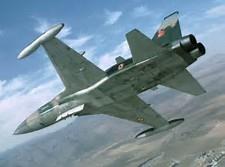
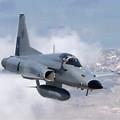
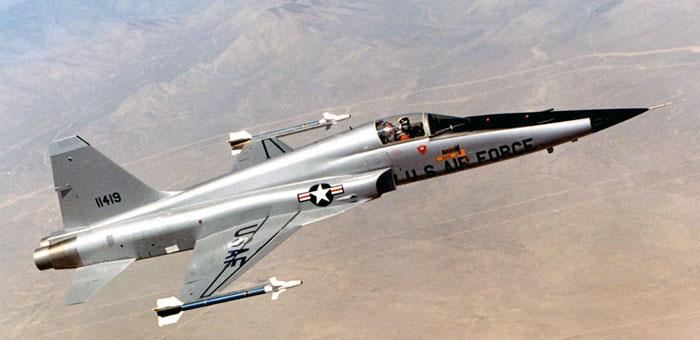
The Northrop F-5A and F-5B Freedom Fighter and the F-5E and F-5F Tiger II are part of a supersonic light fighter family, initially designed in the late 1950s by Northrop Corporation. Being smaller and simpler than contemporaries such as the McDonnell Douglas F-4 Phantom II, the F-5 cost less to both procure and operate, making it a popular export aircraft. The F-5 started life as a privately funded light fighter program by Northrop in the 1950s. The design team wrapped a small, highly aerodynamic fighter around two compact and high-thrust General Electric J85 engines, focusing on performance and low cost of maintenance. Though primarily designed for the day air superiority role, the aircraft is also a capable ground-attack platform. The F-5A entered service in the early 1960s. During the Cold War, over 800 were produced through 1972 for U.S. allies. Though the USAF had no acknowledged need for a light fighter, it did procure roughly 1,200 Northrop T-38 Talon trainer aircraft, which were directly based on the F-5A.
Maximum speed: 1,698 km/h (1,055 mph) Maiden flight: 30 Jul 1959 Length: 47.41 ft Wingspan: 26.67 ft Passengers: 2 Introduced: 1962
Role: Light fighter
National origin: United States
Manufacturer: Northrop Corporation
First flight: F-5A: 30 July 1959
F-5E: 11 August 1972
Introduction: 1962
Status: In service
Primary users: United States Navy
Republic of China Air Force
Republic of Korea Air Force
Islamic Republic of Iran Air Force
Produced: 1959-1987
Number built: A/B/C: 847
E/F: 1,399
Unit cost: F-5E: US$2.1 million
Developed from: Northrop T-38 Talon
Variants: Canadair CF-5
Shaped Sonic Boom Demonstration
Developed into
Northrop F-20 Tigershark
HESA Saeqeh
HESA Azarakhsh
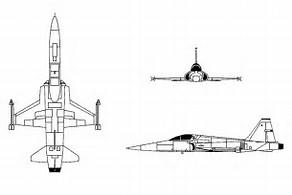
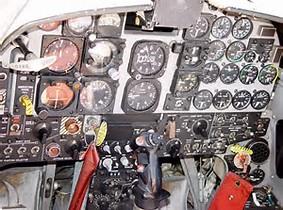
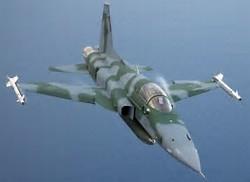
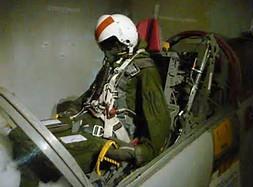
The Northrop F-5 "Freedom Fighter" / "Tiger" / "Tiger II" series was designed from the outset as a low-cost, lightweight, multi-role Mach 1-capable combat platform. While developed within the United States by the Northrop firm, the fighter went on to find quantitative success outside of the country with over half of the 2,246 completed aircraft serving in foreign militaries worldwide. In all, at least 30 US-allied nations operated the type with many in service even today. Despite lacking the true "all-weather" capabilities of more accomplished fighters of her time, the F-5 made up for her inherent limitations through its excellent agility, ease of maintenance and low-cost functionality - all benefits to the budget-strapped military buyer.
The development of the Northrop F-5 began in 1954 when a Northrop team toured Europe and Asia to examine the defense needs of NATO and SEATO countries. A 1955 company design study for a lightweight supersonic fighter that would be relatively inexpensive, easy to maintain, and capable of operating out of short runways. The Air Force did not initially look favorably upon the proposal, since it did not need for a lightweight fighter. However, it did need a new trainer to replace the Lockheed T-33, and in June of 1956 the Air Force announced that it was going to acquire the trainer version, the T-38 Talon.
On April 25, 1962, the Department of Defense announced that it had chosen the aircraft for its Military Assistance Program (MAP). America's NATO and SEATO allies would now be able to acquire a supersonic warplane of world-class quality at a reasonable cost. On August 9, 1962 the aircraft was given the official designation of F-5A Freedom Fighter. Optimized for the air-to-ground role, the F-5A had only a very limited air-to-air capability, and was not equipped with a fire-control radar. The F-5B was the two-seat version of the F-5A. It was generally similar to the single-seat F-5A but had two seats in tandem for dual fighter/trainer duties.
Although all F-5A production was intended for MAP, in October 1965, the USAF "borrowed" 12 combat-ready F-5As from MAP supplies and sent them to Vietnem with the 4503rd Tactical Fighter Wing for operational service trials. This program was given the code name of *Skoshi Tiger" ("little" Tiger). and it was during this tour of duty that the F-5 picked up its Tiger nickname.
On November 20, 1970, the Northrop entry was declared the winner of the IFA (International Fighter Aircraft) to be the F-5A/B's successor. The emphasis was be on the air-superiority role for nations faced with threats from opponents operating late-generation MiG-21s. An order was placed for five development and 325 production aircraft. In January of 1971, it was reclassified as F-5E. The aircraft came to be known as *Tiger II*
The US Navy Fighter Weapons School (the so-called "Top Gun" school) at NAS Miramar acquired a total of ten F-5Es and three F-5Fs for dissimilar air combat training. Because of the F-5's characteristics, which were similar to the MiG-21, was used as 'agressor' aircraft, equipping the FWS and VF-126 at NAS Miramar, plus VF-43 at NAS Oceana. All three units later disposed of their Tiger IIs in favor of the General Dynamics F-16N. These Tiger IIs were passed on to VF-95 at NAS Key West and VFA-127 at NAS Fallon. During FY 1996, VFC-13 moved from NAS Miramar, CA, to NAS Fallon, NV, and transitioned from 12 F/A-18 to 25 F-5 aircraft. VFC-13's flight hour program will increase to offset the scheduled decommissioning of the two remaining Active Component adversary squadrons, VF-45 and VFA-127. This transition to the F-5 adversary aircraft will provide Active and Reserve Navy pilots with air-to-air combat training at significant savings to the taxpayer. Recent estimates show that the F-5 can be operated at one third of what it costs to operate an F/A-18.














